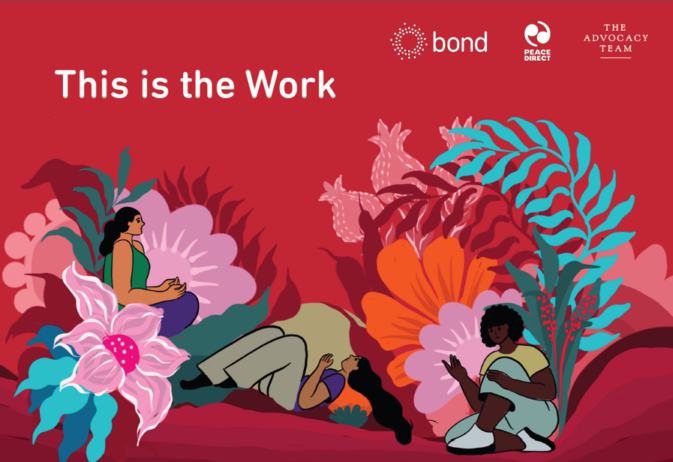Redefining visual representations of developing countries by INGOs – part two
This is part two of this blog. Read part one here.
Good vs Bad image: What are most common characters used by INGOs?
It was amazing to hear how the community members from Kibera slums in Kenya enthusiastically described how they would want INGOs to represent them and Africa at large through a community-centered approach.
First and foremost, consent is key in image making and forms part of a good image. According to communications and academic experts interviewed for the research, a consent form should involve a clear understanding of how the images will be used and the purposes for which they will be utilised. Moreover, it is essential to communicate the right to withdraw consent and have a say in the selection and use of the photographs.
The respondents indicated that a good image in the local perspective should present happy individuals, have informed consent and be ethically gathered. Images need to show realities, but alienate the element of nudity, helplessness and dirty environments.
Respondents mentioned that capturing both vulnerable moments and positive, healthy moments can provide a more complete and authentic representation of a person’s life. One respondent said:
It is important to have a before and after photo especially when dealing with a sick person or child. It is good to portray the person both at her worst and good healthy moment. They should not only focus at a bad moment.
Respondents also highlighted that the images should not be infantilised and feminised, and should integrate all professions, genders, and age groups. They mentioned that most INGOs like taking images of women and children and leaving out other groups like men and youth.
Others said that a good image should highlight the achievements, aspirations, and everyday lives of African people to challenge the stereotypes and promote a more balanced and nuanced understanding of the continent. They highlighted that they would want to be portrayed as active agents in their own lives rather than passive victims. While addressing challenges, it is important to display success stories and development initiatives that provide a more complete picture of the community’s journey.
My research has shown that using images that portray poverty, suffering, distress and sickness in fundraising can have an impact to communities or participants. While these kinds of photos may evoke a strong emotional response and potentially drive immediate donations or support, there is a risk of perpetuating stereotypes, stigmatising communities, and creating a skewed narrative that does not reflect the full spectrum of their experiences.
Such images sometimes have a negative effect on mental well-being, self-esteem and emotional well-being of community members. A participant mentioned that seeing a photograph of her unwell child on social media consistently affected negatively her mental well-being, serving as a reminder of the challenging period when her child was critically ill.
The use of a single static image to represent complex and dynamic situations can indeed lead to misunderstandings and misrepresentations. Photos do not reflect the fluidity of a situation, it only represents a one-time scenario.
How can we decolonise visual representation of Kibera residents?
While progress is being made, challenges persist in the journey to decolonise visual representation. Utilising local talents in storytelling production, including the use of photographers and other creatives from within the community, is an excellent strategy to foster a more authentic and nuanced representation of the community’s experiences. Residents in Kibera expressed unanimous agreement that it is preferable for someone from their community or from Kenya to take their photos, rather than bringing in individuals from the global North to collect stories in their neighbourhoods.
Research Participants reported that employing participatory photography methods that involve community members as active collaborators can lead to more inclusive and empowering photos. In this case, respondents highlighted that they should involve the local people in all processes. From selecting themes, and taking photos, to choosing the kind of image to be used for fundraising and advocacy.
Many INGOs have used celebrities in fundraising efforts within African communities. Promoting heroes and celebrities from within communities can be beneficial as highlighted by many respondents in my research. Almost all participants in my research agreed that INGOs should collaborate with local heroes and celebrities who understand the nuances of the community and can authentically engage with their audience.
The path to decolonise storytelling, then, cannot be spearheaded by INGOs and charity organisations in the West, but must be driven by communities themselves to take the lead and retain agency in shaping their own narratives. This will foster a more authentic and inclusive representation of their experiences and perspectives. The community health workers who formed part of FGD emphasised that the INGOs should not be presenting a list of what they perceive to be a decent photo for donor funding, rather they should listen to local people and adapt their thinking.
The locals believed that using one photo that presents the detrimental status of their environment in all situations, despite their status improving with time, is misrepresenting their efforts to change the status quo. INGOs should be updating their websites and other fundraising platforms to give the real situation on the ground in different timeframes. This brings up an essential point about the need for clear timelines in consent policies, which is often overlooked by many organisations.
INGOs are coming up with ethical guidelines and communities should also maintain their community-owned ethical guidelines. The license offered by the Kenyan government through the Kenya Classification Board is not enough since they do not focus on the process but rather on the final output.
The aim of the guidelines should be to promote education and awareness within the community about their rights, the importance of consent, and the potential impact of documentation. Engaging community leaders, such as chiefs, elders, or community representatives, in a collaborative process to develop these guidelines is critical. Their involvement ensures that the guidelines align with local values, customs, and cultural contexts as well as consent and responsible practices and storytelling that accurately represent the community’s values and realities.
Higher institutions and organisations should consider creating photography decolonisation courses or fellowships. Africa no Filer have a course on how to write about Africa. This is a promising idea that can contribute to addressing issues related to representation, agency, and decolonisation in photography. In addition, Investing in research is vital because INGOs, governments, and local experts will be informed on the type of training required to enhance acceptable images by all.
These are the best way to begin the transition. The good news is that some organisations, such as Amref Health Africa, Oxfam, Save the Children, Girls not Brides, among others, have already started using some of these solutions and approaches.
INGOs hold significant power and resources, which can influence how they represent developing countries. On the other hand, communities equally have power and potential to influence how they are represented.
They can play a pivotal role in decolonising how INGOs and other external actors represent them by actively participating in the process, asserting their agency, and working in collaboration with these organisations.
If you would like to get in touch regarding this blog, please contact: Maureen Cherongis.
Category
News & Views



